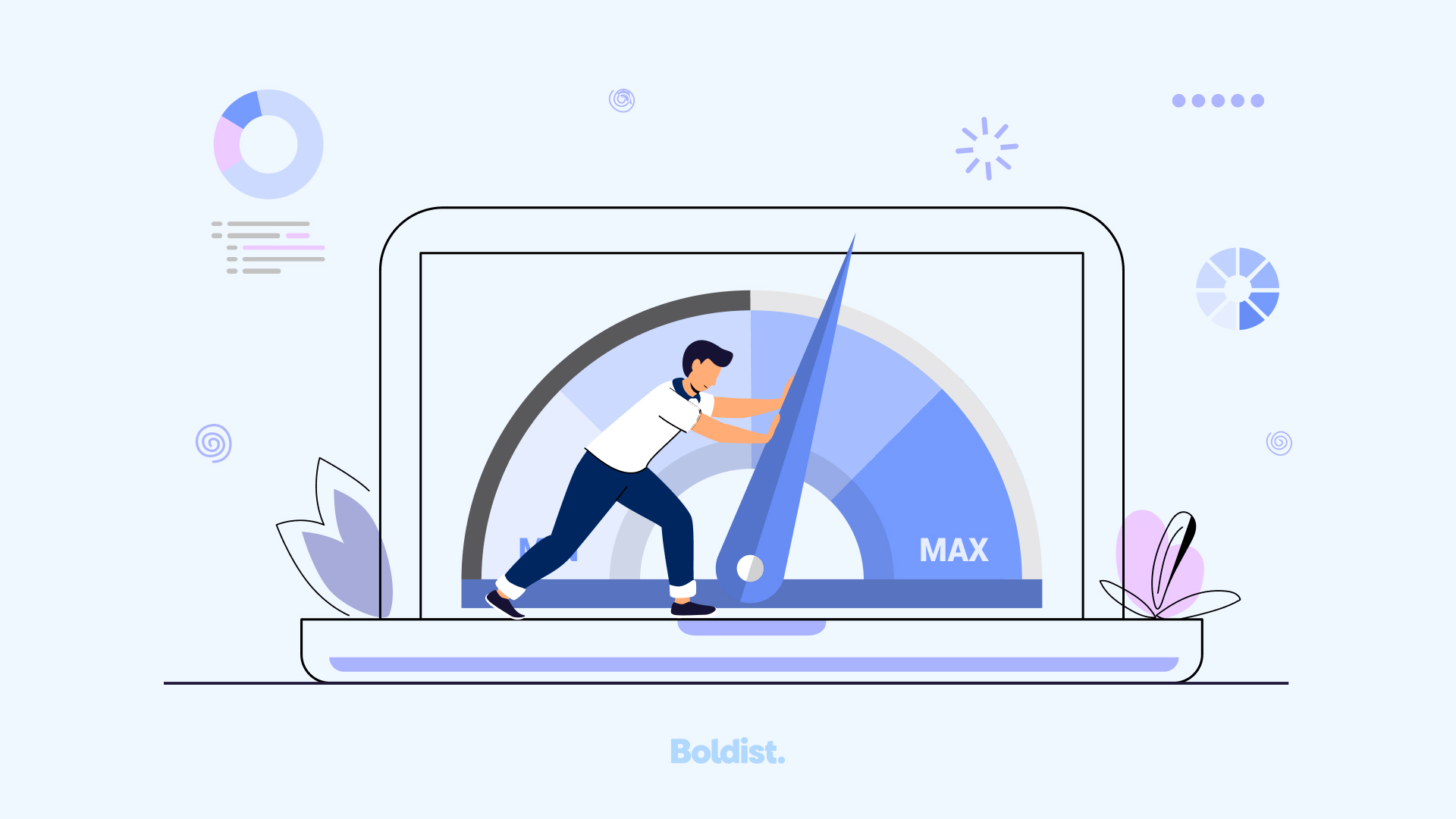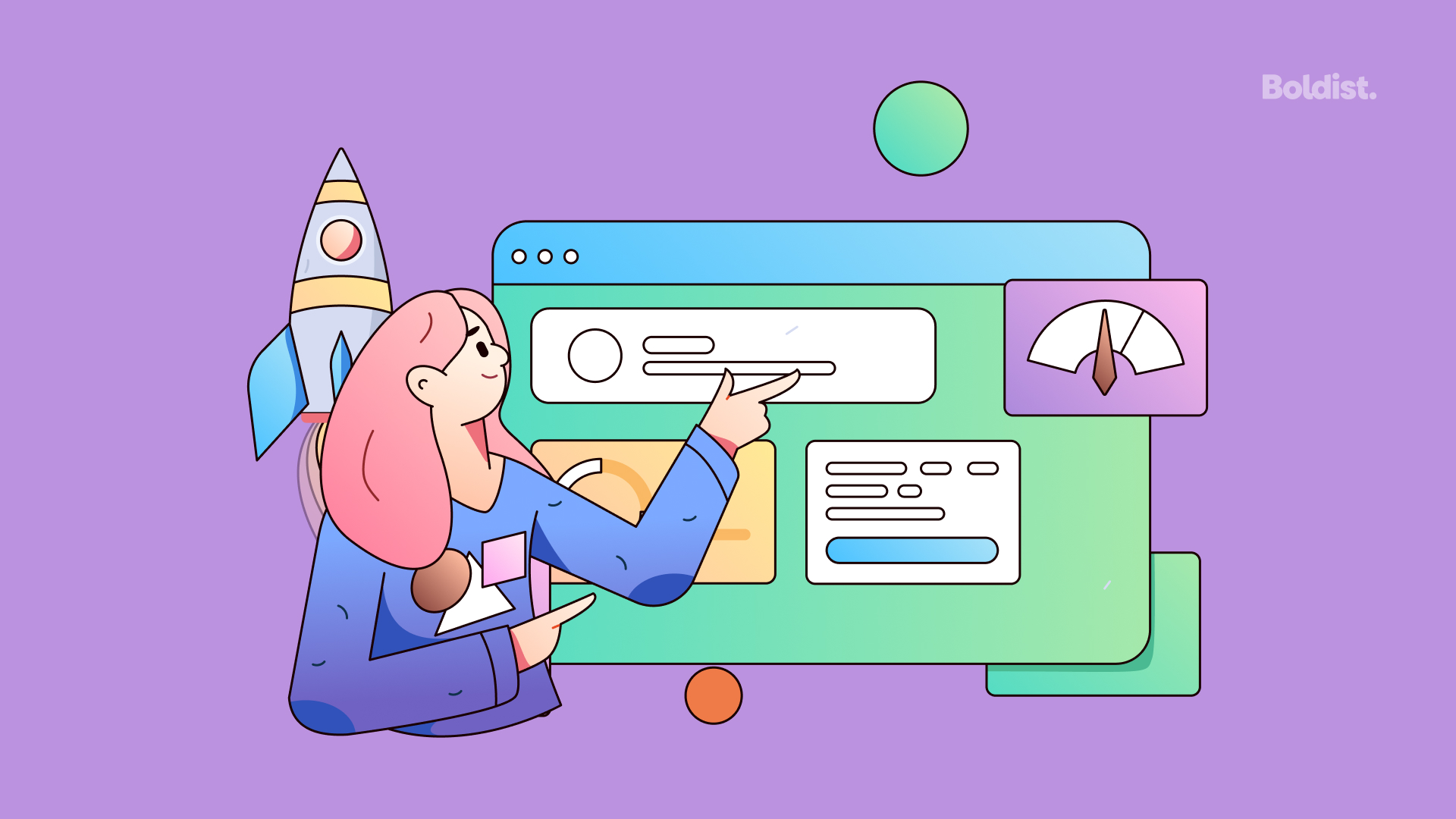A slow website is almost as bad as no website at all. Why? Because it’s hard to find, and of those who do find it, no one wants to use it.
Page speed is the measure of how quickly a browser is able to fully load all of your web page elements; site speed is the overall performance of all the pages on your website. It affects your conversion rates, the revenue your website brings in, and search engines use the metric to determine how your website ranks on the search engine results page (SERP).
Simply put: Site speed matters. A slow website risks losing sales, lower conversion rates, and lower rankings in search engines.
Why Is Site Speed Important?
Conversions
A slow site speed kills your conversion rate. Multiple studies have analyzed changes in page speed and find that making your site faster increases conversion rates while a slower site speed reduces your conversion rate. In fact, in a study of how page load speed affected conversion rates, Walmart.com found that for every 1 second of improvement in their load times, they experienced up to a 2% conversion increase.
Sales
If your business runs an ecommerce website, site speed is integral to your bottom line because conversions = sales. The larger your business, the more incremental changes will have a profound impact on your revenue, but in general if your website is slow, you’re losing sales. Staples found that when they increased site speed by 1 second, sales rose by 10%. With the stakes so high for ecommerce, can you risk having a slow website?
SEO
Site speed is a metric that is used to determine your ranking on the SERP, but if your site speed is slow, it’s almost as though you’re penalized twice over because page speed also directly impacts bounce rate. A slower site gets you a higher bounce rate, which is part of why it affects conversions and sales so much, but it’s also a metric used to determine your SERP ranking. Search engines play an important role in the acquisition of new customers, so you have to ensure you have a fast website to optimize for search engines.
How to Test Site Speed
The go-to resource for testing your page speed is Google PageSpeed Insights, which will test live page speeds for both mobile and desktop. Page experience is informed by Google’s Core Web Vitals – metrics that measure how an end user experiences your website – and you can get live data, page by page, for how your URLs perform.
Ensure you’re monitoring page speed and user experience with Google Search Console to improve your organic search traffic. Search Console lets you access lots of important information not just about site speed but also search engine rankings and organic traffic, and when you approach SEO and UX holistically, having access to reports and historical information gives you greater context to start improving your website metrics so that your search engine rankings can also be improved.
You can also find third-party tools to test your site speed that offer further suggestions and solutions in more layman terms. You can test your site speed using Pingdom, for example, and they will also offer suggestions for how to improve your page performance.

Why Is My Website Speed So Slow?
Page Weight
Your website elements are too big and you need to reduce file sizes. We see this a lot with portfolio websites, where they put high quality images on their website but without changing any of the file sizes. You can run software applications for file compression for CSS, HTML, and JavaScript. And there are other applications that will reduce file sizes for images, though for the most part this can be done through something like photoshop before you even upload the photos.
You can also minify your website’s code, making sure it is lean, properly formatted and optimized. This is why it’s important to have your website designed properly and not pieced together like a Frankenstein website.
As a developer, caching is important. It means that a significant portion of your website’s files can be kept on a user’s browser so that they don’t have to re-download files when they revisit your website, freeing up space on your web server.
Network Conditions
Although this is hard for a developer to control, there are ways to ensure you can deliver web resources quickly over networks with varying speed and capabilities, including minification, compression, and how you choose to host your website.
Hosting Location
The geography of your servers affect how long it takes to deliver assets. A developer can use a CDN (content delivery network) to cache content around the world so that content is geographically closer to the end user.
When to Upgrade to a Faster Website
Check your speeds at PageSpeed Insights but know that site speed will be an average of a sample size of your web pages, not just your best performing pages. Also pay attention to your Core Web Vitals – metrics that measure other aspects of your website’s speed and responsiveness.
Some issues can be fixed without having to rebuild your website, but older websites often come with a lot of baggage in the form of excess code and unused content or plugins. Recognize what makes a good website; it is your most powerful branding and selling tool, and if you want to remain competitive as the digital marketplace expands, your website has to be fast.
If you’re looking to improve your site speed or overhaul your website, partner with the web design agency that builds faster websites, faster.

